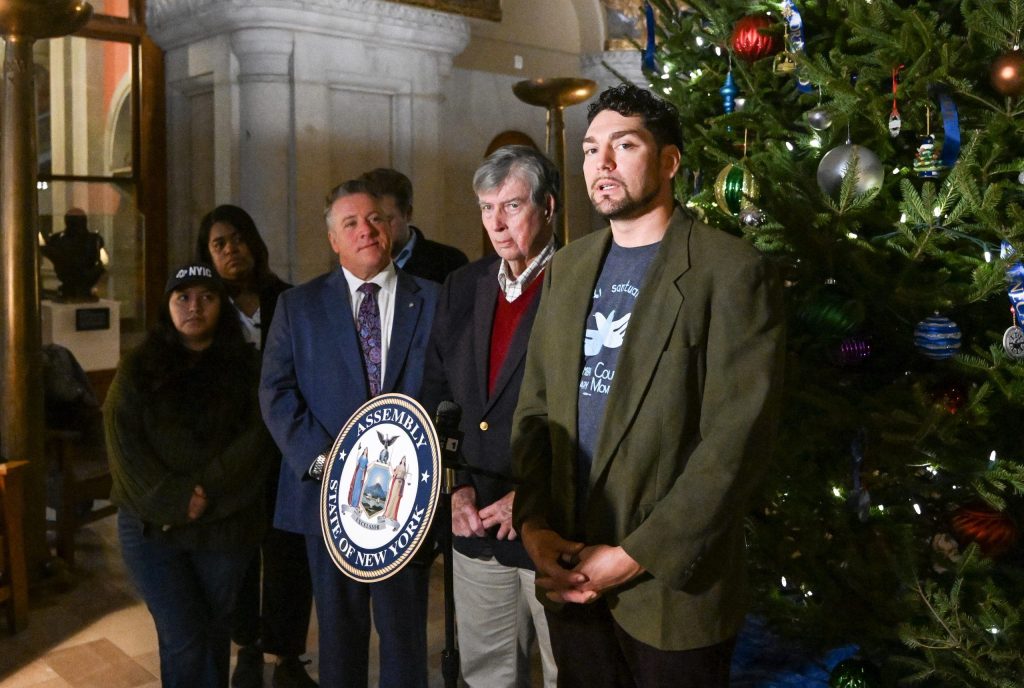The closure of two hotels housing migrants in Albany, New York, has sparked protests and ignited a heated debate about the state’s role in addressing the ongoing migrant crisis. Advocates for the migrants are demanding Governor Kathy Hochul intervene to prevent the evictions and provide state funding for continued housing and support services. They emphasize the migrants’ contributions to the local economy and community, highlighting their employment and integration into the capital region. Conversely, critics argue that the state’s financial support for migrants incentivizes illegal immigration and burdens taxpayers. This clash of perspectives underscores the complex challenges facing New York as it grapples with the influx of migrants and the associated financial strain.
The protests, organized by the Columbia County Sanctuary Movement and a coalition of nonprofits, reflect the growing tension between those who support providing aid to migrants and those who believe the state should prioritize its own citizens and enforce immigration laws. Protest leaders argue that the migrants, many of whom have found jobs and established lives in Albany, should not be forced to return to overcrowded shelters in New York City. They emphasize the humanitarian aspect of the situation, particularly as winter approaches, and criticize New York City’s handling of the crisis, accusing the city of using migrants as “political footballs.” They believe the migrants deserve the chance to fully integrate into their new communities and continue contributing to the upstate economy.
However, Assembly member Matt Slater and others express concerns about the financial burden on taxpayers and the perceived encouragement of illegal immigration. Citing a recent Siena poll showing majority support for stricter immigration enforcement, Slater argues that the protesters are out of touch with the sentiments of many New Yorkers. He contends that providing extensive taxpayer-funded services to migrants incentivizes illegal immigration and demands accountability from state and city governments. He encourages those protesting the closures to personally house migrants if they feel so strongly about their plight, rather than expecting taxpayers to bear the cost.
New York City, grappling with a “right to shelter” law and an influx of over 223,000 migrants since 2022, faces immense financial pressure. The city’s projected spending on the migrant crisis is staggering, estimated to exceed $12 billion by fiscal 2025. Despite these costs, the city, under Mayor Eric Adams, has begun scaling back its shelter program, closing several hotels and other facilities used to house migrants. This move reflects a growing concern about the sustainability of the city’s current approach and a shift towards prioritizing fiscal responsibility.
The impending change in presidential administration, with President-elect Donald Trump’s focus on stricter immigration enforcement, further complicates the situation. While some, like Assembly member Slater, welcome the prospect of a stronger federal stance on immigration, others fear the potential negative consequences for migrants and the communities that have welcomed them. This political backdrop adds another layer of complexity to the debate, raising questions about the future of immigration policy and its impact on state and local governments.
The clash between those demanding continued support for migrants and those advocating for stricter immigration enforcement highlights the deep divisions within New York regarding the migrant crisis. As the state navigates the complexities of providing shelter and services while facing budgetary constraints and a shifting political landscape, the debate is likely to continue. Finding a sustainable and humane solution that addresses the needs of both migrants and taxpayers remains a significant challenge for New York’s leaders.










